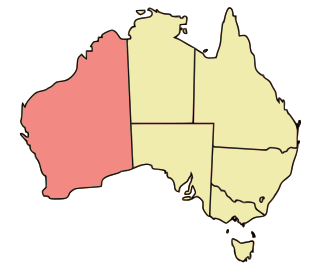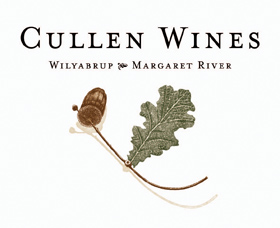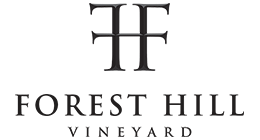
Margaret River is a town in the South West of Western Australia, located in the valley of the eponymous Margaret River, 277 kilometres (172 mi) south of Perth, the state capital. Its Local Government Area is the Shire of Augusta-Margaret River.

Burgundy wine is made in the Burgundy region of eastern France, in the valleys and slopes west of the Saône, a tributary of the Rhône. The most famous wines produced here, and those commonly referred to as "Burgundies", are dry red wines made from pinot noir grapes and white wines made from chardonnay grapes.

The Côte de Nuits is a French wine region located in the northern part of the Côte d'Or, the limestone ridge that is at the heart of the Burgundy wine region. It extends from Dijon to just south of Nuits-Saint-Georges, which gives its name to the district and is the regional center. Though some white and rosé wines are produced in the region, the Côte de Nuits is most famous for reds made from pinot noir. The Côte de Nuits covers fourteen communes. Six produce grand cru wines, in the central district between Gevrey-Chambertin and Nuits-Saint-Georges, with four lesser villages either side. The Grand Crus of the Côte de Nuits are some of the smallest appellations in France, less than a hectare in the case of La Romanée.

Washington wine is a wine produced from grape varieties grown in the U.S. state of Washington. Washington ranks second in the United States in the production of wine. By 2017, the state had over 55,000 acres (220 km2) of vineyards, a harvest of 229,000 short tons (208,000 t) of grapes, and exports going to over 40 countries around the world from the 940+ wineries located in the state. While there are some viticultural activities in the cooler, wetter western half of the state, the majority (99.9%) of wine grape production takes place in the shrub-steppe eastern half. The rain shadow of the Cascade Range leaves the Columbia River Basin with around 8 inches (200 mm) of annual rain fall, making irrigation and water rights of paramount interest to the Washington wine industry. Viticulture in the state is also influenced by long sunlight hours and consistent temperatures.

Harold Olmo was an American viticulturist and professor at the University of California, Davis where he created many new grape varieties known today as Olmo grapes. In the 1950s, he helped to establish California's first quarantine facility on the UC Davis campus to permit California growers to import foreign vines. This led to an expansion of California's wine industry as more Vitis vinifera was introduced to the area.
Tahbilk Winery is a historic Australian winery with National Trust certification. It is located 120 km (75 mi) north of Melbourne between the townships of Seymour and Nagambie in the Nagambie Lakes a sub region of Goulburn Valley Wine Region. It was established in 1860, and is the oldest family-owned winery and vineyard in Victoria. In 2022 it was ranked the eighteenth largest Australian wine company by production, and the tenth largest in terms of total revenue. The winery is part of Australia's First Families of Wine, a prominent Australian wine alliance.

Margaret River is the major geographical indication wine region in southwest Western Australia, with 5,840 hectares under vine and 215 wineries as at 2012. Margaret River wine region is made up predominantly of boutique size wine producers; although winery operations range from the smallest crushing 3.5 tonne per year to the largest around 2,500 tonne. The climate of Margaret River is more strongly maritime-influenced than any other major Australian region. It has the lowest mean annual temperature range, of only 7.6 °C, and as well as the most marked Mediterranean climate in terms of rainfall, with only 200 millimetres of the annual 1160 millimetres falling between October and April. The low diurnal and seasonal temperature range means an unusually even accumulation of warmth. Overall the climate is similar to that of Bordeaux in a dry vintage. Although the region produces just two percent of total Australian wine grape production, it produces over 20 percent of Australia's premium wine market. The principal grape varieties are split 40/60 between red and white; Cabernet Sauvignon, Chardonnay, Sauvignon blanc, Sémillon, Shiraz, Merlot and Chenin Blanc.
Australia's First Families of Wine (AFFW) is an Australian wine initiative to promote Australian wine.

Henschke is a family-owned, 156-year-old Australian winery, located in Keyneton, South Australia in the Eden Valley wine region. It produces the 'Hill of Grace', one of Australia's "cult wines", and was considered Australia's second best wine by James Halliday in 2009.

Western Australian wine refers to wine produced in Australia's largest state, Western Australia. Although the state extends across the western third of the continent, its wine regions are almost entirely situated in the cooler climate of its south-western tip. Western Australia produces less than 5% of the country's wine output, but in quality terms it is very much near the top, winning 30 percent of the country's medals.
Grosset Wines is an Australian winery based in the Clare Valley wine region of South Australia.
Leeuwin Estate is an Australian winery and restaurant based in the Margaret River wine region of Western Australia.

The Great Southern wine region is in Western Australia's Great Southern region. It comprises an area 200 kilometres (120 mi) from east to west and over 100 kilometres (62 mi) from north to south, and is Australia's largest wine region.

Cullen Wines is an Australian winery based in Wilyabrup, within the Margaret River wine region of Western Australia.
Bass Phillip is an Australian winery based in Leongatha, within the Gippsland region of Victoria.

Cape Mentelle Vineyards is a wine estate in the Margaret River region, 274 km, south-west of Perth, Western Australia. The winery was founded by David Hohnen, a third-generation farmer who studied wine making and viticulture in California in the 1960s, and his brothers Mark and Giles. Cape Mentelle is one of the ‘founding five’ wineries in Margaret River, was established in 1970, and came to prominence by winning the Jimmy Watson Memorial Trophy in 1983 and 1984 for their Cabernet sauvignon.
Voyager Estate is an Australian winery located in the Margaret River wine region of Western Australia. James Halliday gives the winery his highest ranking, five red stars, in his "Halliday Australian Wine Companion". According to Ray Jordan, wine writer for The West Australian, the winery produces excellent wines.

Forest Hill Vineyard is an Australian winery business based in the Great Southern wine region of Western Australia. Its vineyard is west of Mount Barker, and its winery and cellar door are further south, at Denmark.

Woodlands Wines is an Australian winery at Wilyabrup, in the Margaret River wine region of Western Australia. Established in 1973 by David and Heather Watson, it held its first vintage in 1978, and by the end of 1982 had won trophies at wine shows in Mount Barker, Perth and Canberra with its "Andrew" Cabernet Sauvignon 1981.

Deep Woods Estate is an Australian winery at Yallingup, in the Margaret River wine region of Western Australia.

















